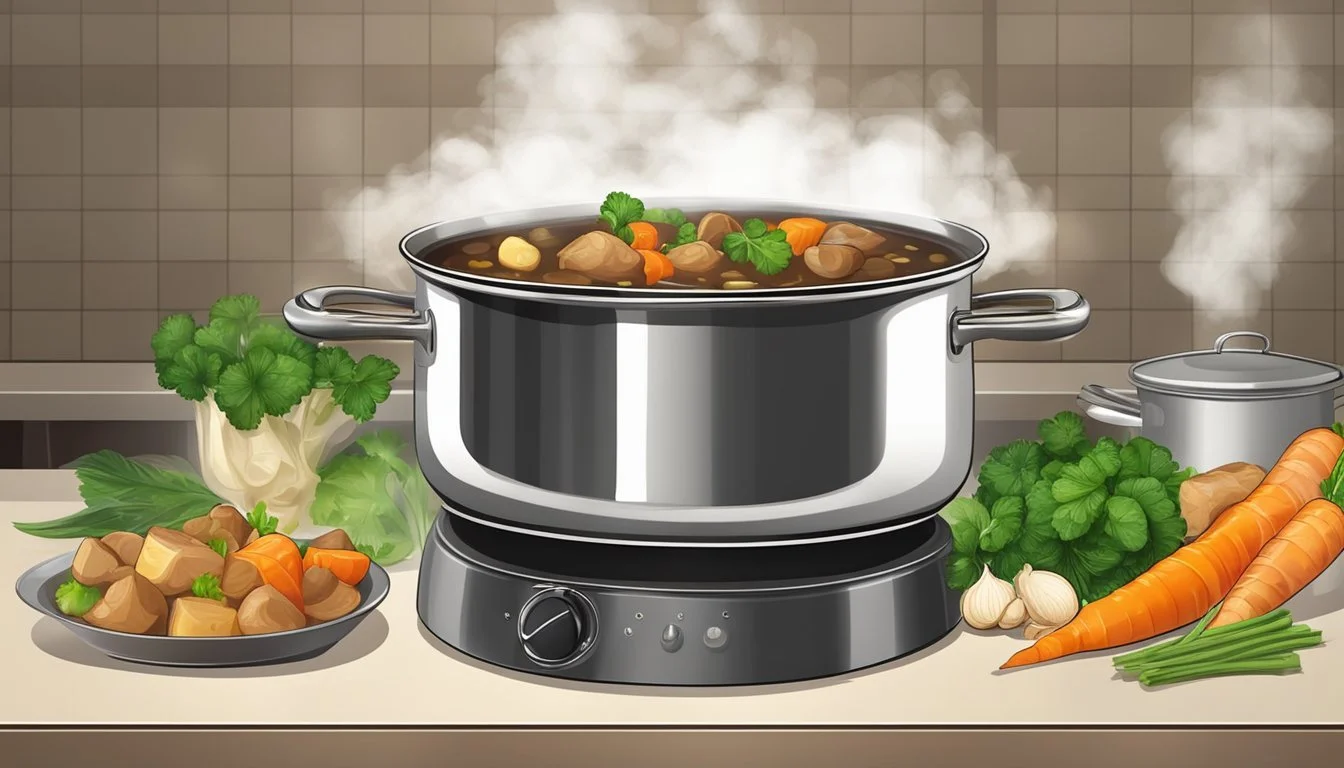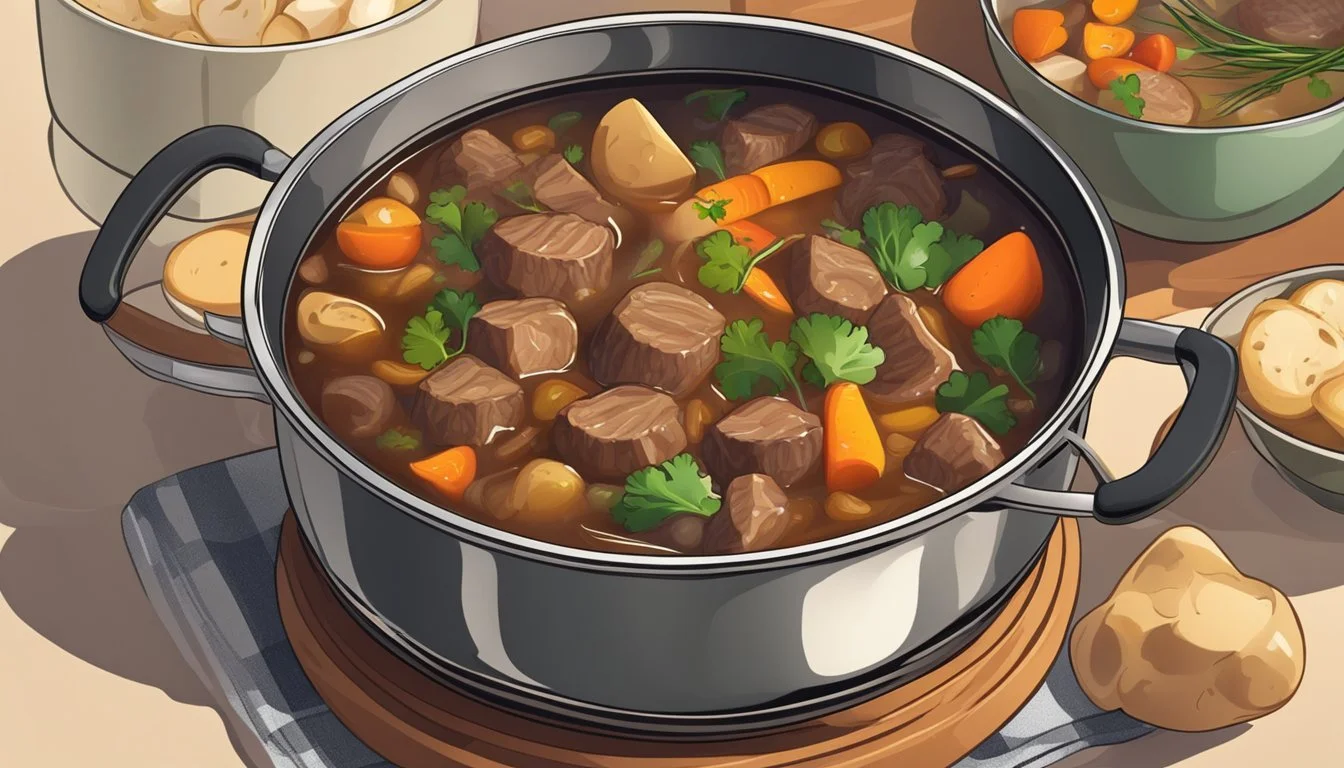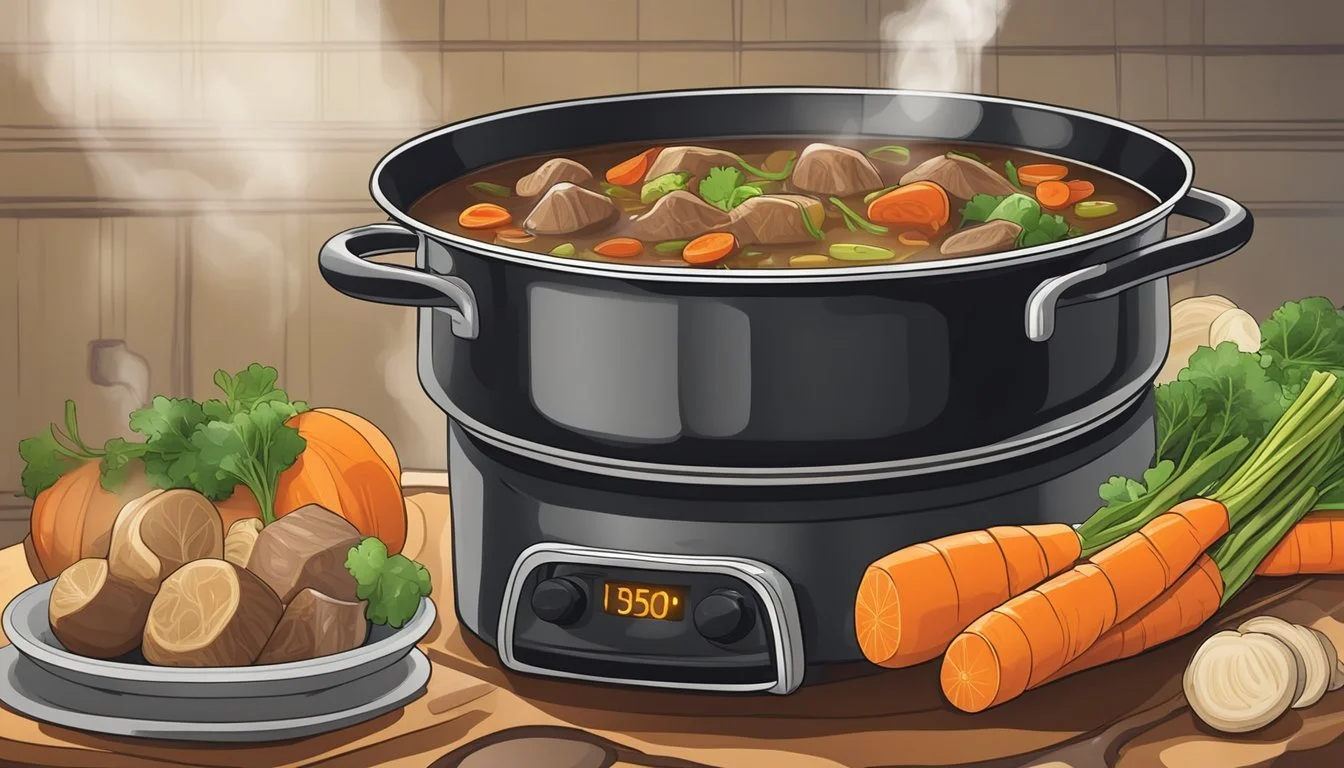Best Way to Reheat Irish Stew
Ensuring Tender Vegetables and Rich Broth
Reheating Irish stew effectively is key to enjoying its rich flavors and tender vegetables a second time around. The hearty combination of succulent meat, robust root vegetables, and a deeply flavored broth make this dish a beloved comfort food. However, the reheating process can be tricky, as it's important to maintain the integrity of the vegetables and ensure the broth remains savory without losing its complexity.
There are several methods to reheat the stew, each with its own advantages. The microwave offers convenience and speed, especially for individual servings. By adding a little extra water or stock, the stew can be kept moist, and covering the dish properly allows for an even distribution of heat. On the other hand, slow cookers and ovens provide a gentler warming process, ideal for larger batches. These methods can help preserve the texture of the vegetables and enhance the broth, potentially even improving the stew's flavor after an overnight rest in the refrigerator.
Selecting the best (What wine goes well with beef?) technique for reheating Irish stew depends on the desired outcome and the amount of time available. What remains constant, however, is the goal: to revive the stew to its peak of savory warmth, offering a meal that is just as satisfying as when it was first prepared.
Understanding Irish Stew
Irish stew is a quintessential comfort food, known for its rich flavors and heartwarming qualities. The stew traditionally highlights lamb or beef as the main protein, with lamb being the more authentic choice, steeped in Irish culinary tradition.
Ingredients typically include:
Protein: Lamb or beef, cut into chunks.
Vegetables: Potatoes, onions, carrots, and celery form the stew’s vegetable base.
Flavor Enhancers: Garlic and herbs like parsley, thyme, and sometimes rosemary add depth.
Liquid: Beef broth is commonly used to create a flavorful liquid base.
As for the preparation, the meat is usually browned first to add a complex flavor. The root vegetables and flavor enhancers are then cooked until tender. All ingredients are combined and simmered, turning into a hearty and robust stew.
When storing Irish stew, it can be frozen for later consumption. To freeze, let the stew cool, transfer it into airtight containers, and store in the freezer. To thaw, it’s best to move the stew to the refrigerator and let it slowly thaw overnight. As with most stews (What wine goes well with stews?), Irish stew's flavors can deepen when it’s reheated, making leftovers a sought-after treat.
It’s important to reheat Irish stew gently to maintain the tenderness of the vegetables and the rich taste of the broth. Whether reheating in a microwave, oven, or on the stove, a slow and gentle reheat will preserve the quality of this traditional Irish dish.
Essential Reheating Tips
Reheating Irish stew properly is crucial for preserving the tenderness of vegetables and the richness of the broth. Different methods can be used depending on the tools available and the desired outcome.
Stovetop Method
The stovetop is ideal for reheating beef stew, (What wine goes well with beef stew?) ensuring moisture and flavor are fully retained. Carefully transfer the stew into a pot and add a splash of water or beef broth to prevent drying out. Heat the stew over a low flame, stirring occasionally, until it simmers gently, but don't bring it to a rolling boil.
Oven-Based Warming
Using an oven, especially a Dutch oven, can evenly reheat stew while maintaining flavor and moisture. Preheat to 350°F (175°C), transfer the stew into an oven-safe dish, cover it with a lid or aluminum foil, and warm it for 30-45 minutes to avoid overcooking the vegetables.
Microwave Techniques
When using a microwave, add a tablespoon of water to the stew to introduce additional moisture. Cover with a microwave-safe lid or a vented plastic wrap and heat in 30-second intervals, stirring in between, until the stew reaches the desired temperature.
Slow Cooker and Crock Pot Usage
For reheating stew, a slow cooker or crockpot can provide consistent low heat. Set it to a low setting and allow the stew to warm slowly over a few hours. This method minimizes the risk of overcooking and helps maintain the moisture and flavor profile of the stew.
Preventing Vegetable Sogginess
To prevent vegetables in the stew from becoming too soft, reheat the stew gradually and avoid high temperatures. Gentle heating methods, such as the stovetop or slow cooker, are preferred. If the vegetables are already at the desired tenderness, consider removing them before reheating and adding them back in later.
Maintaining Broth Quality
The quality of the broth is paramount in a good Irish stew. During reheating, adjust the consistency by adding small amounts of water or beef broth as needed. Stir the stew occasionally to ensure even heating and to maintain an even distribution of flavors throughout the broth.
Additional Flavoring Methods
Enhancing the flavor of reheated Irish stew can transform it from a simple leftover meal to a revitalized dish that could rival its original state. The following methods focus on incorporating new elements to boost the stew's savory qualities and preserve the integrity of its ingredients.
Incorporating New Spices
When reheating Irish stew, introducing additional spices can elevate its flavor profile. Seasonings such as freshly ground black pepper, a pinch of kosher salt, or an extra sprig of rosemary can add a new dimension to the stew's taste. It is advised to add these spices sparingly to avoid overpowering the dish.
Rosemary: A classic herb complementing beef's robust flavor.
Bay Leaves: Add one more to infuse a subtle depth.
Thyme: Sprinkle lightly for a fresh, herby note.
Using Umami Enhancers
Umami enhancers such as Worcestershire sauce or tomato paste can intensify the meaty, rich flavors inherent in beef stews. A tablespoon of tomato paste swirled into the broth can deepen the base, while a dash of Worcestershire sauce can provide a tangy twist that complements the tender beef.
Worcestershire Sauce: Add a teaspoon for complexity.
Tomato Paste: Stir in a small amount for richness.
Creative Use of Leftover Beverages
Leftover beverages like Guinness or red wine serve as excellent additions to enrich the stew's broth. Not only do they introduce a new layer of flavor, but they also can tenderize the beef further and unite the existing tastes seamlessly.
Beer/Guinness: Half a cup can enhance the maltiness.
Red Wine: A splash can add a fruity acidity that balances the savory elements.
Freezing and Storing Guidelines
Maintaining the integrity of Irish stew during storing and reheating begins with proper freezing techniques. One should ensure moisture retention for the vegetables and the flavorful broth while preparing the stew for long-term preservation.
Optimal Freezing Techniques
To freeze Irish stew effectively, one should let the stew cool completely before portioning it into airtight containers or heavy-duty freezer bags. Freezing the stew in smaller amounts not only saves space but also facilitates quicker thawing processes. It is essential to leave a small space at the top of each container as the stew will expand when frozen, reducing the risk of container breakage and preserving moisture.
Key steps for freezing Irish stew:
Cool the stew before freezing.
Use airtight containers or freezer bags.
Portion stew into suitable sizes.
Leave space for expansion.
Proper Stew Thawing
To thaw frozen stew, one should plan ahead. Transferring the stew to the refrigerator and allowing it to thaw slowly, typically over 24 hours, is the most effective way to maintain texture and moisture content. A slow thaw ensures that the vegetables remain tender and the flavors are preserved.
Recommended thawing process:
Place frozen stew in the refrigerator.
Allow 24 hours for complete thawing.
Avoid rapid thawing methods to preserve quality.
Long-Term Preservation
For the best long-term preservation of Irish stew, one should aim to store it in the freezer at a consistent 0°F (-18°C), where it can maintain its quality for approximately 3 months. Regularly checking the stew for freezer burn, which can dehydrate and toughen the food, is important to ensure the leftovers stay as delicious as when first made.
Ideal conditions for storing frozen stew:
Keep the temperature at 0°F (-18°C).
Store for up to 3 months.
Monitor for signs of freezer burn.
Health and Nutrition Considerations
When reheating Irish stew, one must consider the nutritional value of the dish. Irish stew typically includes a rich variety of vegetables and beef, both essential for a balanced diet.
Vegetables: They are a key component of the stew, providing essential vitamins, minerals, and fiber. To preserve their nutritional value and tenderness, they should be reheated gently to avoid overcooking.
Vegetable Nutrients Provided Carrots Vitamin A, Fiber Potatoes Vitamin C, Potassium Onions Antioxidants, Fiber
Beef: It's a high-quality protein source and is rich in nutrients like iron and B vitamins. When reheating the stew, ensure the beef maintains its nutritional integrity by avoiding high temperatures that can degrade proteins and vitamins.
Protein Preservation: Reheat stew over low heat to maintain the integrity of beef proteins.
Broth Flavor: The broth, flavored by both the beef and vegetables, is a nutritious component of the stew. It contains amino acids and minerals leached from the ingredients during the cooking process. Gentle reheating ensures these nutritional benefits are preserved.
In summary, the method chosen for reheating Irish stew is crucial for maintaining not only the taste and texture but also the nutritional benefits of the stew. By applying slow and gentle heat, the vegetables can retain their nutritional value and the beef can stay rich in protein, contributing to a well-rounded, healthful meal.
Serving Suggestions
When serving Irish stew, selecting the right accompaniments can elevate this comfort food to a complete and fulfilling meal. The addition of appropriate side dishes and wine enhances not only the flavors but also the nutrition of the meal.
Complementary Side Dishes
Irish Soda Bread: A classic pairing, the dense, slightly sweet bread compliments the richness of the stew perfectly.
Crusty Loaf of Bread: Ideal for sopping up the delightful broth, ensuring not a drop goes to waste.
Mashed Potatoes: A spoonful of creamy mashed potatoes alongside the stew offers a comforting texture contrast.
Green Salad: For a lighter touch, a crisp green salad balances the hearty nature of the stew.
Wine and Stew Pairings
Red Wine: A glass of red wine, especially one with earthy undertones, harmonizes with the robust flavors of Irish stew.
Type of Red Wine Notes Pinot Noir Lighter, with fruit-forward flavors that don't overpower the stew Merlot A medium-bodied choice that compliments the tender meat and vegetables
Additional Meal Elements
Nutrition: Adding a green salad or steamed vegetables can increase the nutritional profile of the meal.
Flavor: For an extra flavor dimension, consider introducing a selection of cheeses or a sprinkle of fresh herbs before serving.
Filling Option: Those seeking a more filling meal might enjoy a side of roasted root vegetables, which echo the flavors found within the stew.
Specialty Dietary Adjustments
When reheating Irish stew, one must consider how dietary adjustments can impact nutrition, flavor, and the integrity of the meal. It is possible to adapt the traditional recipe to various dietary needs without compromising these aspects.
Gluten-Free Adaptations
To modify a conventional Irish stew for a gluten-free diet, one should replace the all-purpose flour typically used for thickening with a gluten-free alternative such as cornstarch. They should ensure that all the broth and other ingredients added for reheating are certified gluten-free to avoid contamination.
Flour Replacement: Substitute equal amounts of cornstarch for all-purpose flour to maintain the stew's thickness.
Broth Check: Only use gluten-free broth to keep the meal safe for those with gluten sensitivities.
Vegetarian and Vegan Options
For those adopting a vegetarian or vegan lifestyle, the protein in Irish stew, traditionally meat, can be replaced with plant-based proteins like beans or lentils. Instead of beef broth, one should use vegetable broth. To add a savory flavor that replicates the umami of meat, one can incorporate nutritional yeast.
Protein Replacement: Legumes can serve as a nutritious and hearty replacement for meat.
Flavor Enhancement: Nutritional yeast adds depth to the flavor profile, making it more complex.
Keto and Low-Carb Alternatives
Adjusting Irish stew to fit a keto or low-carb diet involves reducing the carb content by focusing on the vegetables and proteins while omitting or minimizing higher-carb vegetables like potatoes. One may also thicken the stew with alternatives lower in carbs than traditional flour.
Vegetable Selection: Choose low-carb vegetables such as cauliflower to replace traditional higher-carb options.
Thickening Agent: Consider using guar gum or xanthan gum in small quantities as carb-conscious thickeners.








